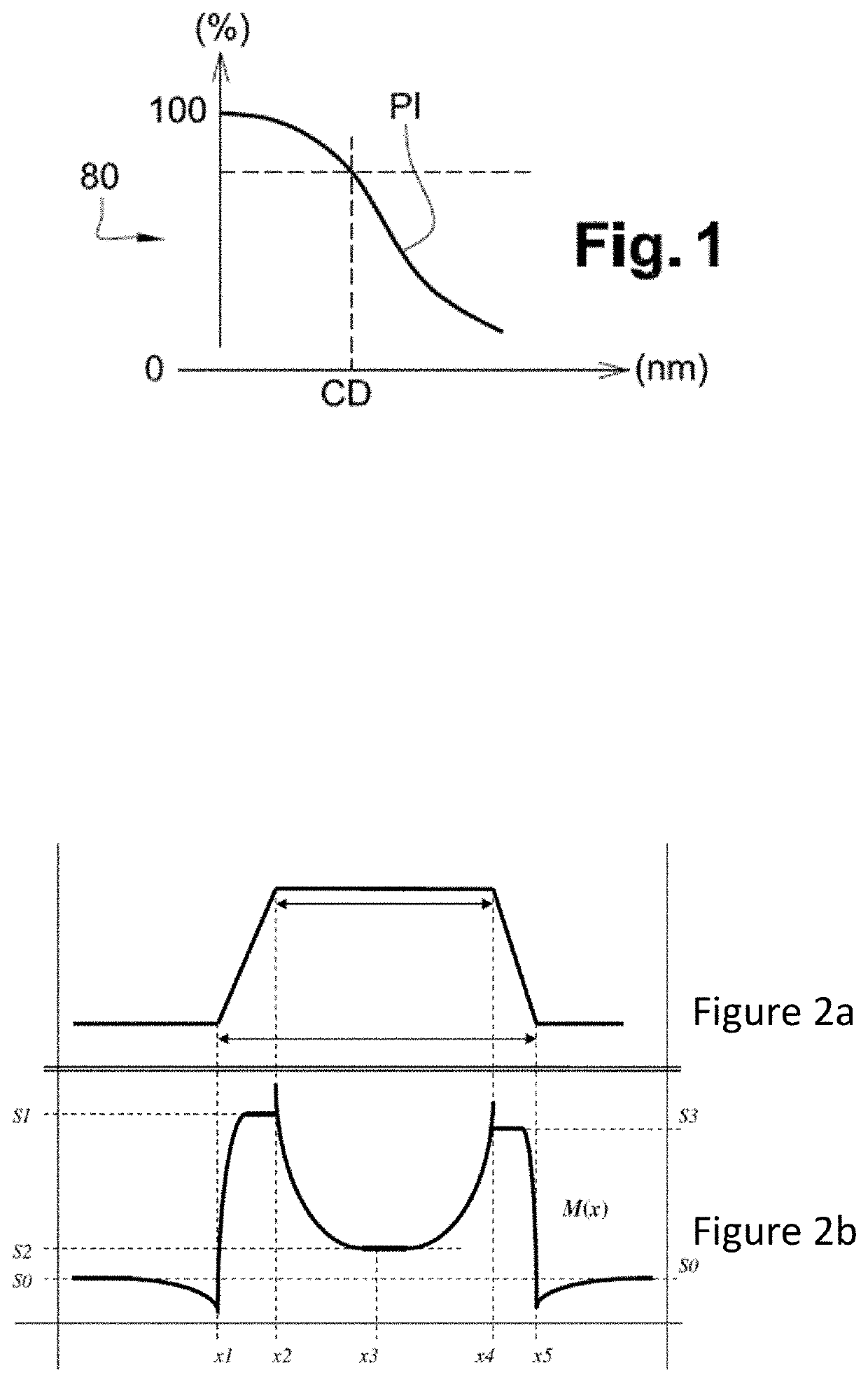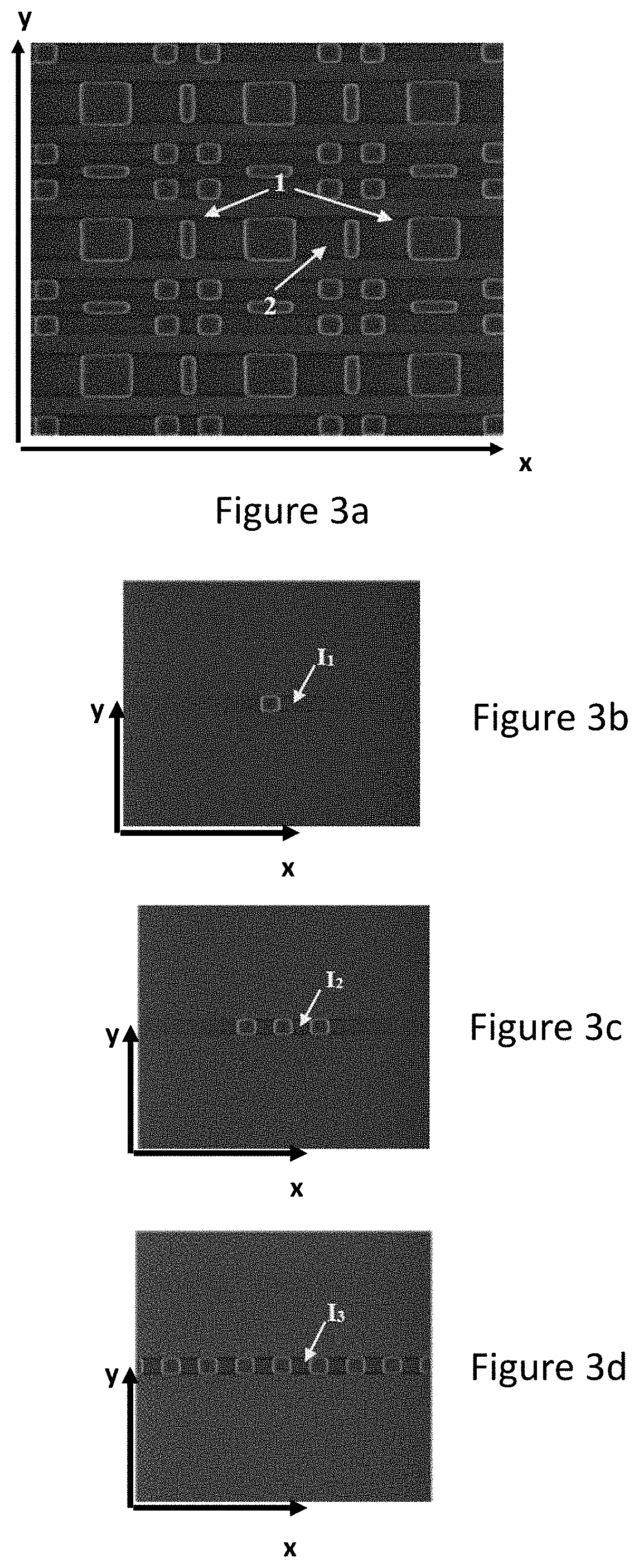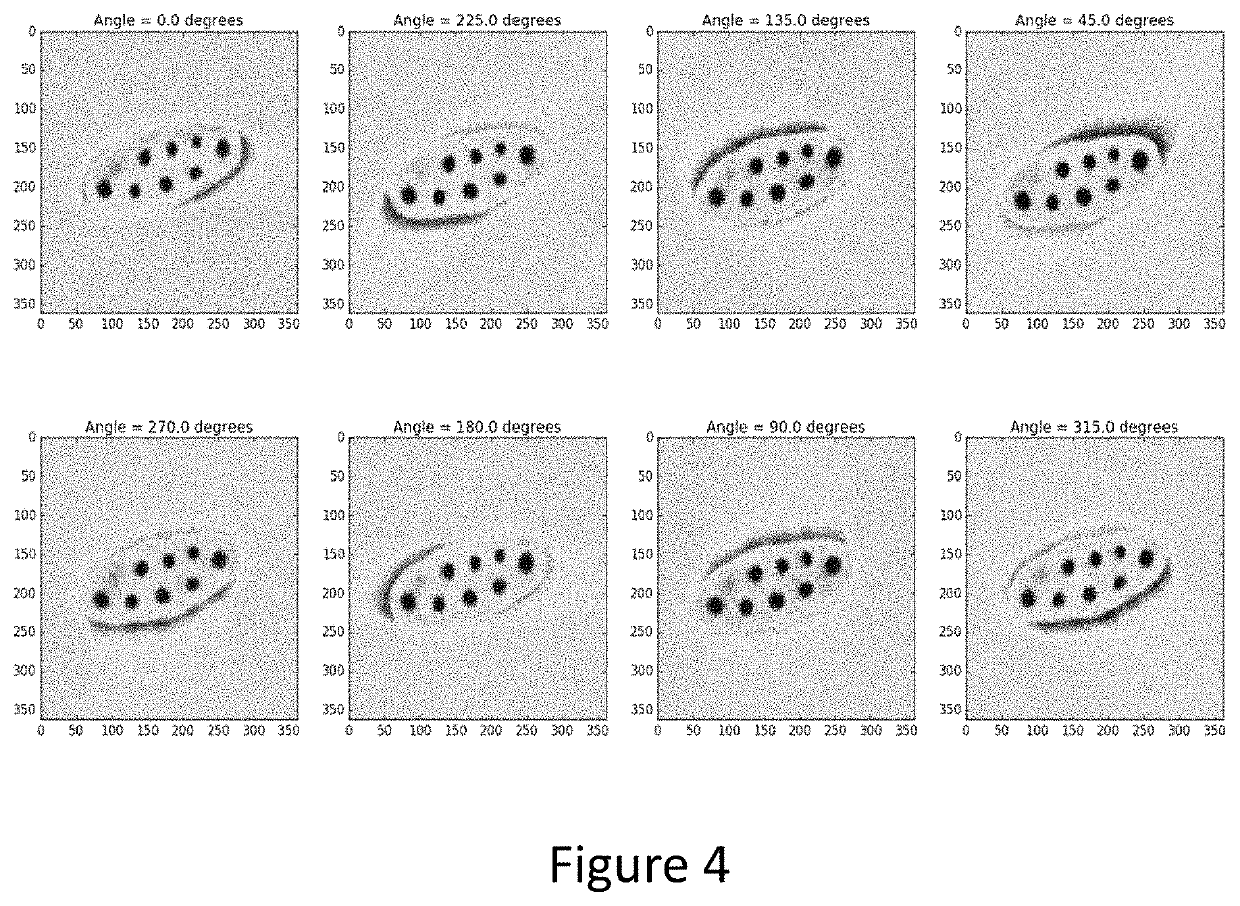Method for characterisation by cd-sem scanning electronic microscopy
haracterisation technology, applied in the field of implementing a scanning electron microscopy (sem) characterisation technique, can solve the problems of not very reliable measurements of objects of less than 100 nm size, cd-sem techniques give not very reliable measurements, and the empirical threshold applied to any type of pattern is all the less satisfactory
- Summary
- Abstract
- Description
- Claims
- Application Information
AI Technical Summary
Benefits of technology
Problems solved by technology
Method used
Image
Examples
Embodiment Construction
[0076]FIG. 4 shows a series of CD-SEM images taken on a same sample. Each image has been acquired by scanning the surface of the sample according to a different angle. It is obvious that by varying the scanning angle, the images obtained change. This clearly shows that the path of the beam has an influence on the image formation process: the signal measured at a given position on the sample changes according to the path followed by the primary electron beam.
[0077]These observations may be explained by evoking the charging effects described above, including temporal effects.
[0078]It appears necessary to model the signal measured at a given position on the surface of the sample while taking into account the positions scanned by the primary electron beam before arriving at the given position.
[0079]When the incident beam of primary electrons is advancing at the point r on the sample, secondary electrons are generated with an efficiency ρ(r). This efficiency is linked to the nature of th...
PUM
| Property | Measurement | Unit |
|---|---|---|
| size | aaaaa | aaaaa |
| scanning electron microscopy | aaaaa | aaaaa |
| critical dimension | aaaaa | aaaaa |
Abstract
Description
Claims
Application Information
 Login to View More
Login to View More - R&D
- Intellectual Property
- Life Sciences
- Materials
- Tech Scout
- Unparalleled Data Quality
- Higher Quality Content
- 60% Fewer Hallucinations
Browse by: Latest US Patents, China's latest patents, Technical Efficacy Thesaurus, Application Domain, Technology Topic, Popular Technical Reports.
© 2025 PatSnap. All rights reserved.Legal|Privacy policy|Modern Slavery Act Transparency Statement|Sitemap|About US| Contact US: help@patsnap.com



